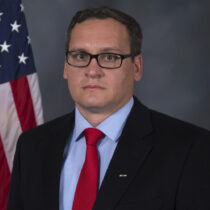Magazine

Vote Gun
Patrick Charles’s new book, Vote Gun, explores the history of gun rights legislation in the United States and uses several Bentley collections. Charles sat down with Collections magazine to discuss how gun rights became such a divisive issue—and what it might take to resolve it.
By Lara Zielin
Your research traces the debate about gun laws in the United States as far back as the New York Sullivan Act of 1911. Can you explain that law and its impact?
The Sullivan Act was a gun control law that was passed in response to a wave of violence in New York in the early 1900s. After its passage, the editors of several sporting magazines came together and started lambasting it, saying the law went too far. There was deep concern that, if New York passed this law, that it would spread and be a norm throughout the country. Gun advocates united at this point, and this would be the driving force against gun control for the next 50 years.
Until the Gun Control Act of 1968, right? Can you speak about what was happening in the U.S. at the time, and what was different about this law?
After the assassination of John F. Kennedy in 1963, politicians started taking stances about gun control, and there was widespread public support for it. Thomas Dodd, a representative from Connecticut, worked initially to restrict access to some forms of handguns and rifles, but the work was slow. Then, Martin Luther King Jr. was assassinated in April 1968, followed quickly by Robert F. Kennedy in June of that same year. The Gun Control Act passed shortly thereafter.
Things changed again in the 1970s. Can you speak about what happened when Richard Nixon was elected?
Once Nixon was in office, gun rights groups started to chip away at the 1968 bill under the premise that gun rights were a state matter and not a federal matter. There was also a new rash of cheaply produced handguns being sold en masse, like the Saturday Night Special. The federal government wanted to regulate these guns and, in principle, the National Rifle Association (NRA) supported it. But the far-right extremist groups said if you regulate one gun, you will regulate all guns, that it’s a slippery slope to complete disarmament. That argument is embedded in our gun rights debate to this day.
Is this when the NRA began to shift into a gun rights organization, versus a hunting/shooting organization?
Yes, around this time, the NRA did a series of studies, and they understood that their members wanted them to oppose gun control. They changed their approach based on fear of losing members, and I think that’s still true today. It’s the tail wagging the dog; they are beholden to what the general gun rights population thinks.
What collections did you use in your research at the Bentley?
The Bentley has collections from several politicians talking about gun laws and gun control going back to the Royal S. Copeland papers from the 1930s, when he was a senator in New York. Philip A. Hart is another Michigan politician whose papers shed light on the issue, and there were also the Harold Glassen papers—he was a former president of the NRA. The breadth of the papers really gives a sense of what local politicians thought about an issue over decades.
What impact do you hope your book will have?
Certainly the book can help correct the myth of when and why gun rights formed. It can also refute the idea that gun control leads to a despondent government. I’m not a political scientist; my point is that you have to look at the history of the issue. The solution is neither to end guns nor to let them be wholly unregulated—it’s somewhere in the middle. There has to be a discourse, people have to come together and have that discussion, not engage in “what aboutism” instead of listening to each other.
Patrick J. Charles is senior historian and archivist for the United States Air Force. He is the author of Armed in America: A History of Gun Rights from Colonial Militias to Concealed Carry (2018). His research and writings have been cited by the Supreme Court of the United States, lower federal courts, and state supreme courts.
